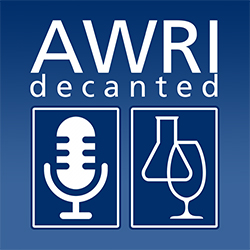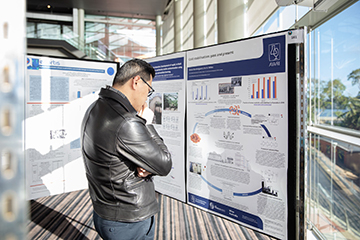Order the latest staff publications online
Accessing the latest AWRI publications is easy. Visit the AWRI Publications web page to:
- View the 10 most recent AWRI staff publications and order the articles online from the AWRI Library
- Search the staff publications database
- Read the full-text of ‘Technical Notes’ from Technical Review (PDF format)
- Read the full-text of ‘AWRI reports’ and ‘Vineyards of the world columns’ published in Wine & Viticulture Journal (PDF format)
- Read the full text of ‘Ask the AWRI columns’ published in Australian & New Zealand Grapegrower & Winemaker
The AWRI’s most recent publications are listed below.
2247 Culbert, J.A., Jiang, W., Bilogrevic, E., Likos, D., Francis, I.L., Krstic, M.P., Herderich, M.J. Compositional changes in smoke-affected grape juice as a consequence of activated carbon treatment and the impact on phenolic compounds and smoke flavor in wine. J. Agric. Food Chem. 69(35): 10246-10259; 2021.
2248 Culbert, J.A., Krstic, M.P., Herderich, M.J. Development and utilization of a model system to evaluate the potential of surface coatings for protecting grapes from volatile phenols implicated in smoke taint. Molecules 26(17): 5197; 2021.
2249 AWRI. Vineyard management practices to improve soil health. Aust. N.Z. Grapegrower Winemaker (689): 50, 52, 54-56 ; 2021.
2250 Carrau, F., Henschke, P.A. Hanseniaspora vineae and the concept of friendly yeasts to increase autochthonous wine flavor diversity. Front. Microbiol. 12: 702093; 2021.
2251 Onetto, C.A., Borneman, A.R., Schmidt, S.A. Strain-specific responses by Saccharomyces cerevisiae to competition by non-Saccharomyces yeasts. Fermentation 7(3): 165; 2021.
2252 Coulter, A., Cordingley, B., Cowey, G., Dixon, R., Essling, M., Holdstock, M., Longbottom, M., Pitcher, L., Simos, C., Krstic, M. Vintage 2021 – observations from the AWRI helpdesk. Wine Vitic. J. 36(4): 30-31; 2021.
2253 Dry, P. Aligoté. Wine Vitic. J. 36(4): p. 65; 2021.
2254 Essling, M. Ask the AWRI: Best practice weed management and the future of herbicides. Aust. N.Z. Grapegrower Winemaker (692): p. 20; 2021.
2255 Culbert, J.A., Jiang, W.W., Ristic, R., Puglisi, C.J., Nixon, E.C., Shi, H.M., Wilkinson, K.L. Glycosylation of volatile phenols in grapes following pre-harvest (on-vine) vs. post-harvest (off-vine) exposure to smoke. Molecules 26(17): 5277; 2021.
2256 Gnoinski, G.B., Close, D.C., Schmidt, S.A., Kerslake, F.L. Towards accelerated autolysis? Dynamics of phenolics, proteins, amino acids and lipids in response to novel treatments and during ageing of sparkling wine. Beverages 7(3): 50; 2021.
2257 Hixson, J., Pisaniello, L., Parker, M., Grebneva, Y., Bilogrevic, E., Stegmann, R., Francis, L. Methods for predicting and assessing flavour evolution during white wine ageing. Guichard, E., Le Quéré (eds) Proceedings of the 16th Weurman Flavour Research Symposium, May 4-6, 2021. 10.5281/zenodo.5346589: 1-6; 2021.
2258 Wheal, M.S., Wilkes, E.N. Application of multi-isotope calibration to analysis of wine samples by ICP-MS. J. Anal. At. Spectrom. doi: 10.1039/D1JA00269D: 1-8; 2021.
2259 Cowey, G. Ask the AWRI: How much wine to expect per tonne of grapes. Aust. N.Z. Grapegrower Winemaker (693): p. 52-53; 2021.
2260 Ward, C.M., Perry, K.D., Baker, G., Powis, K., Heckel, D.G., Baxter, S.W. A haplid diamondback moth (Plutella xylostella L.) genome assembly resolves 31 chromosomes and identifies a diamide resistance mutation. Insect Biochem. Mol. Biol. 138: 103622; 2021. |








